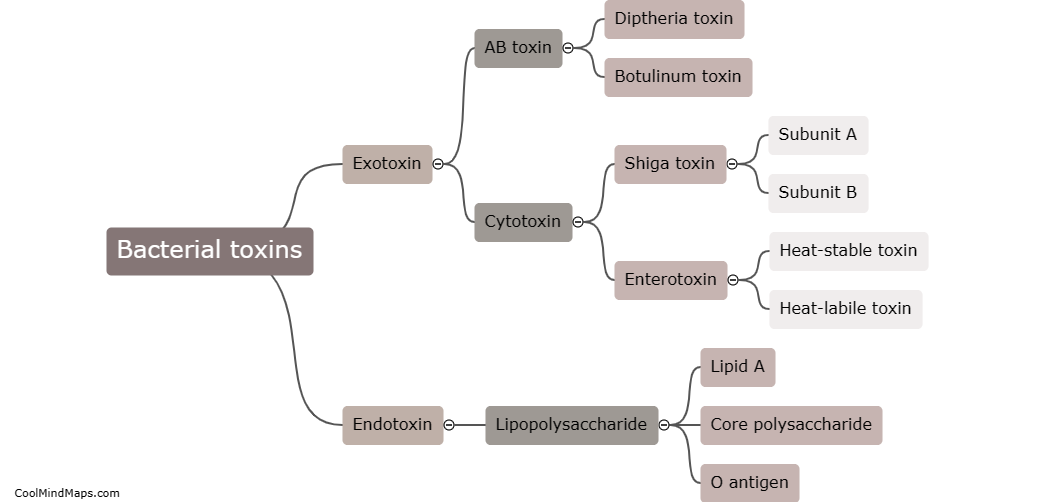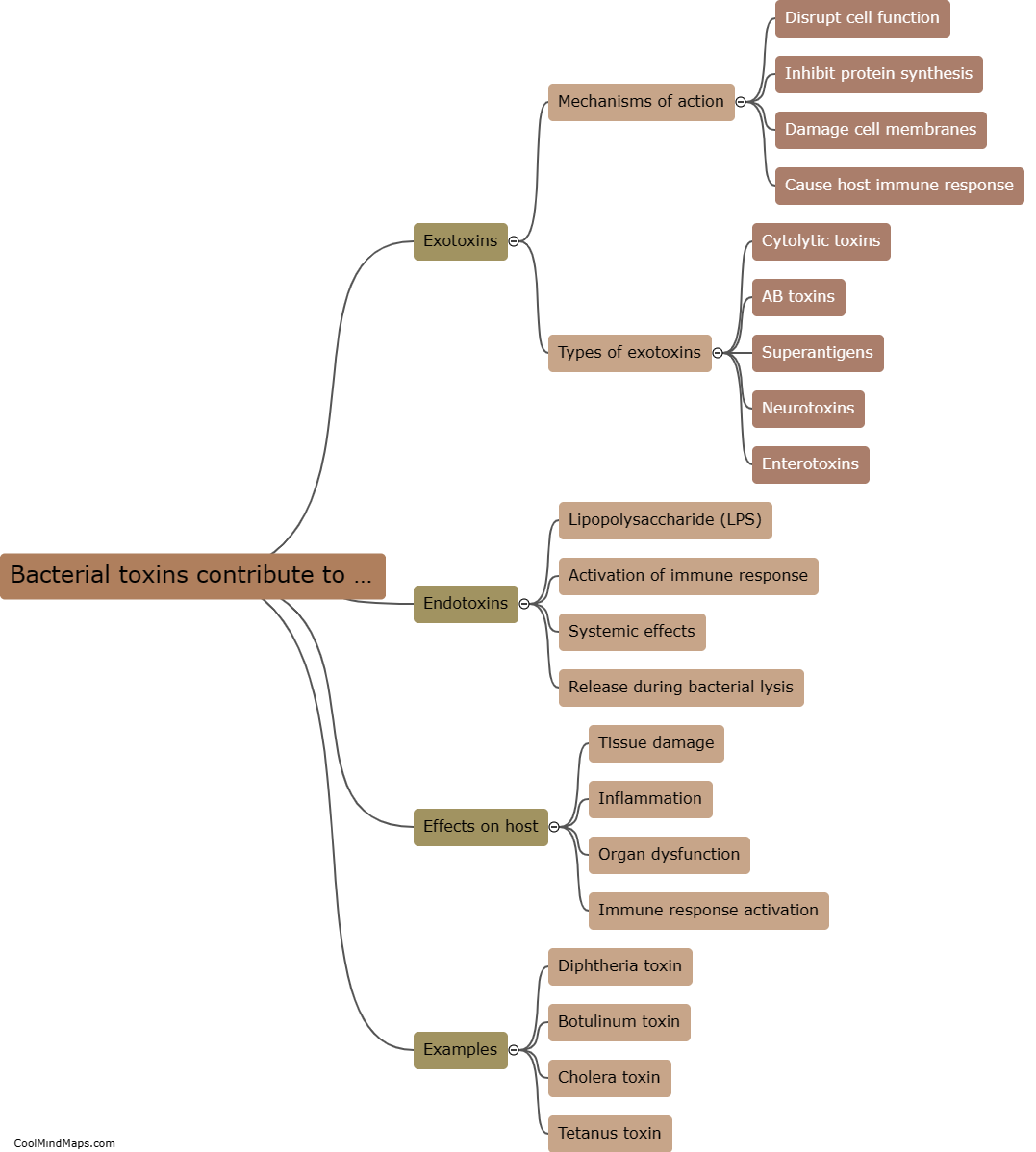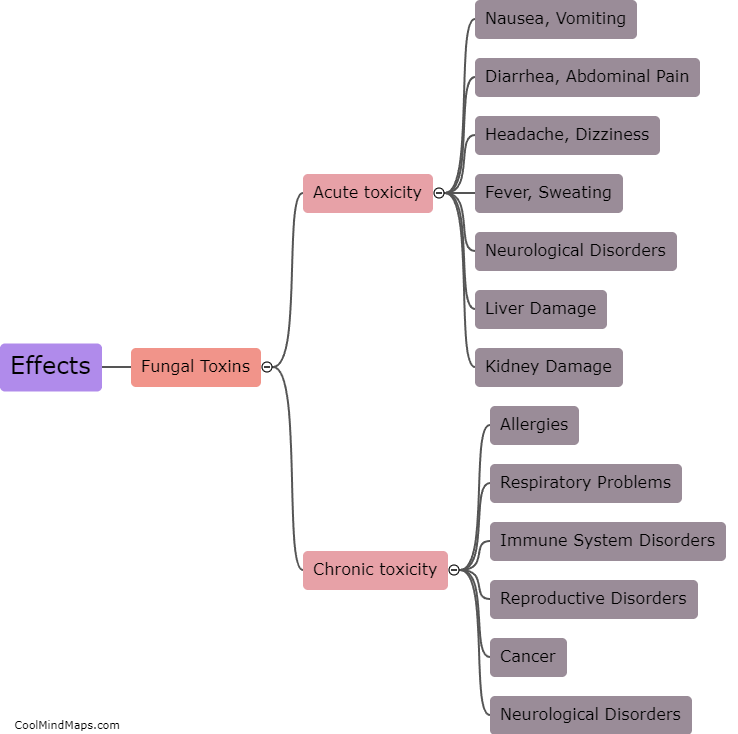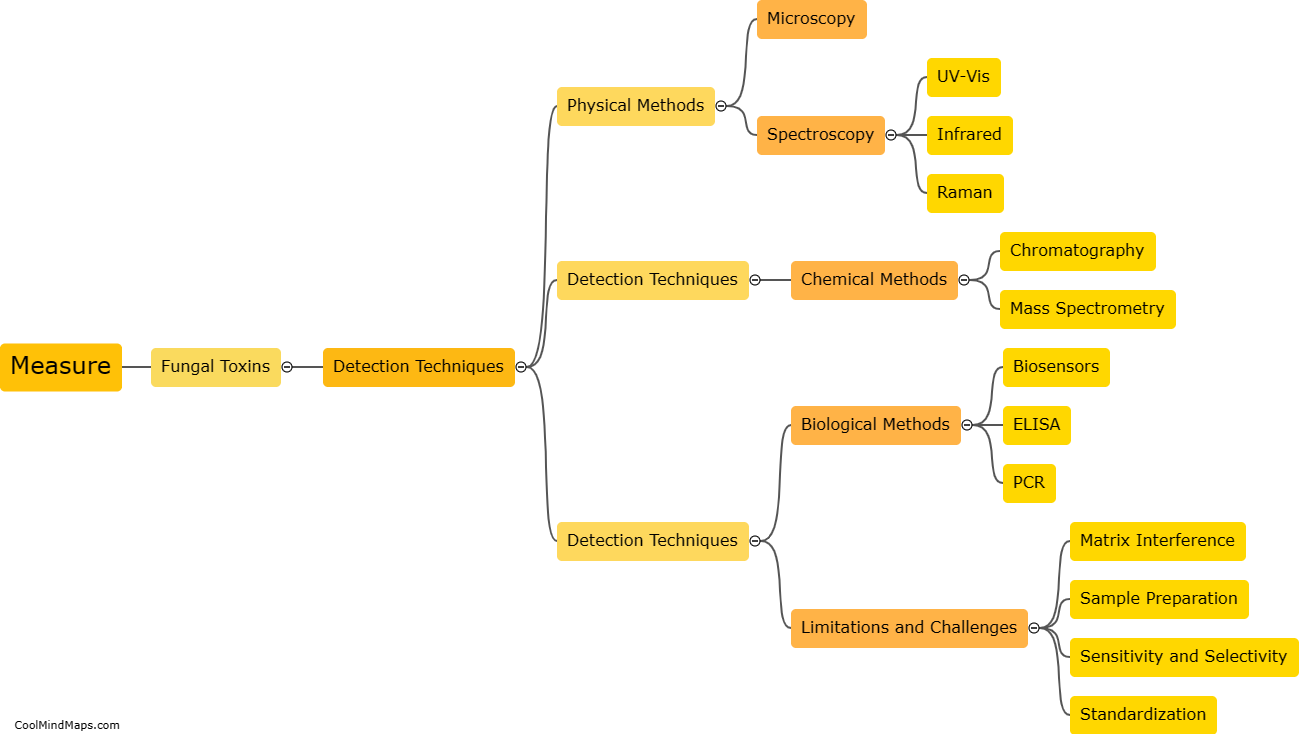What are fungal toxins?
Fungal toxins are secondary metabolites produced by various types of fungi, including both molds and yeasts. These toxins can pose a significant health risk to humans and animals when ingested, inhaled, or in contact with the skin. Fungal toxins are commonly found in contaminated food and crops, as well as in indoor environments with mold growth. They can cause a range of illnesses, from mild allergic reactions to severe toxic and carcinogenic effects. Some well-known fungal toxins include aflatoxins, ochratoxins, trichothecenes, and ergot alkaloids. These toxins are often regulated by health authorities to minimize their harmful impact on public health.
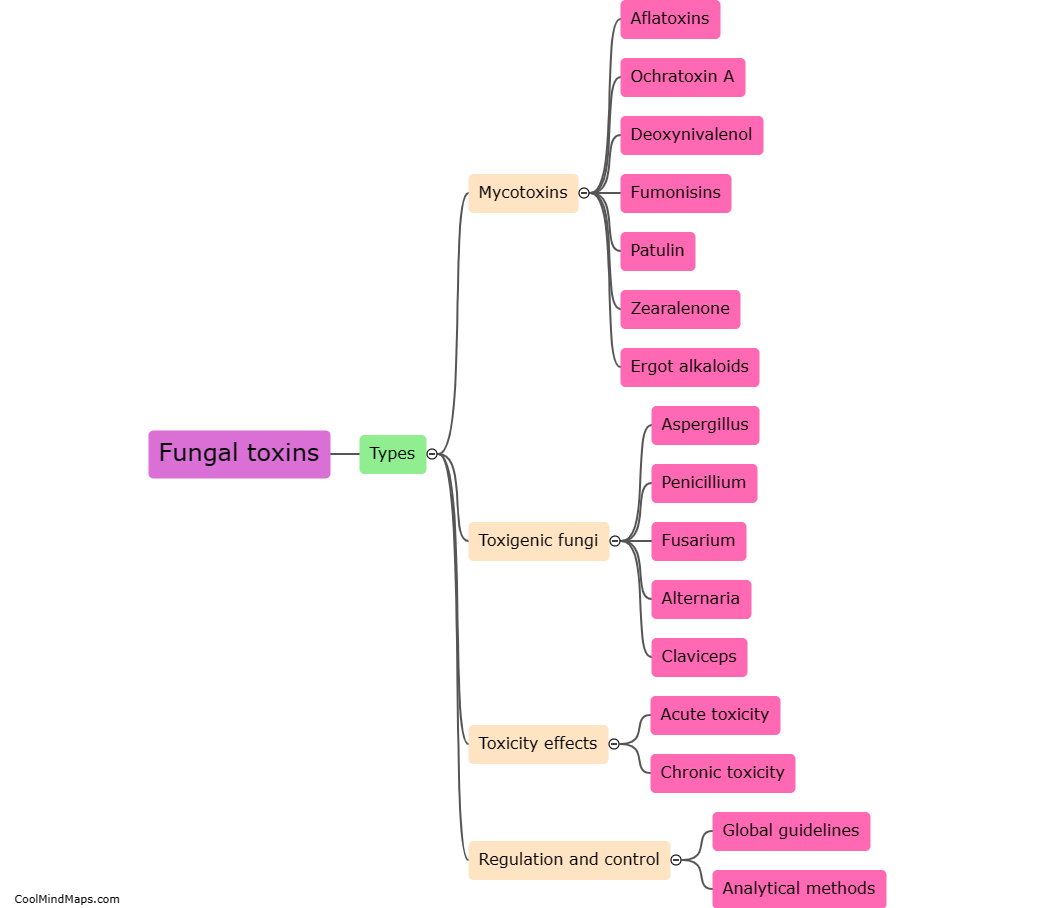
This mind map was published on 3 December 2023 and has been viewed 117 times.






